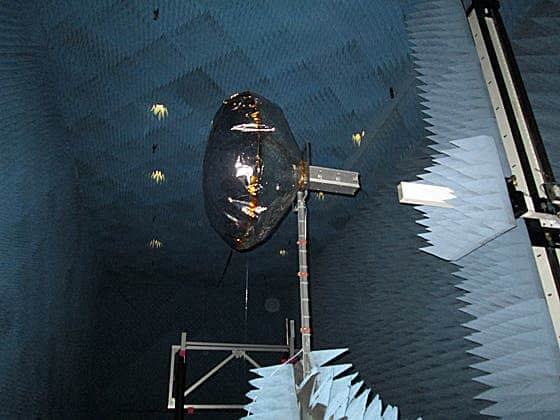The CubeSat is a revolutionizing miniaturized communications satellite only 10x10x10 cm. Because of its tiny size and weight, these satellites can be launched at a much lower cost. Some 50 to 60 CubeSats have been launched in the past 15 years since they were first developed at the California State Polytechnic University, most of which were simply ferried along with more important cargo destined for space.
Because of the CubeSat’s small size, its antennas, paramount to relaying back and forth information, have a very limited range, further limiting their capabilities. This might soon change, allowing CubeSats to be positioned into farther orbits, after researchers at MIT used an ingenious method to develop larger antennas for the CubeSats with no expense in launch size. They simply made inflatable antennas!

PHOTO: ALESSANDRA BABUSCIA
The idea isn’t new. Inflatable antennas have developed, tested and even launched into space before, however these methods were designed for regular-sized satellites, and utilized compressed air systems. In a CubeSat, however, there’s simply no room for bulky air tanks and valves; also compressed air tanks come with the risk of explosion during atmospheric transit.
The MIT solution is a lot more elegant. Inside the inflatable antennas, the researchers put benzoic acid powder. The substance sublimates at low pressure (hello, space!), meaning it instantly turns into a gas, expanding in volume and inflating the antennas. The researchers tested the method in a vacuum chamber and immediately relished when they saw the antennas expanded to their designed shape.
The magic powder
Two types of one-meter-wide antennas made out of thin Mylar were tested: cone-shaped and cylindrical. After inflation in the vacuum chamber, the researchers tested the electromagnetic properties for each antenna type. While both did well, the cylindrical antenna particularly showed promise – according to MIT, it can transmit data 10 times faster and seven times farther than traditional CubeSat antennas. That’s a dramatic increase in performance!
Inflatable material in space, exposed to immense radiation and high-velocity particle impacts doesn’t sound like the best idea, some would argue. Benzoic acid is amazing in this respect, as it turns into a gas for as much as it has room to expand. If it runs out of room, the remaining benzoic acid will stay in powder form. So, even if the antenna becomes deteriorated and looses gas, the excesses powder will sublimate and keep things running, provided of course punctured holes aren’t too big.
hrough more tests, the MIT scientists determined that one of the antenna could stay inflated for up to a few years, even if it contained multiple small holes.
“With this antenna you could transmit from the moon, and even farther than that,” says Alessandra Babuscia, who led the research. “This antenna is one of the cheapest and most economical solutions to the problem of communications.”
“In the end, what’s going to make the success of CubeSat communications will be a lot of different ideas, and the ability of engineers to find the right solution for each mission,” Babuscia says. “So inflatable antennae could be for a spacecraft going by itself to an asteroid. For another problem, you’d need another solution. But all this research builds a set of options to allow these spacecraft, made directly by universities, to fly in deep space.”


